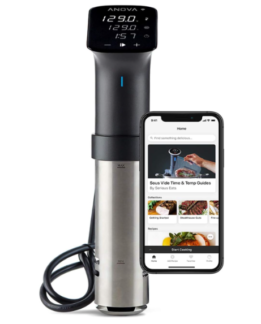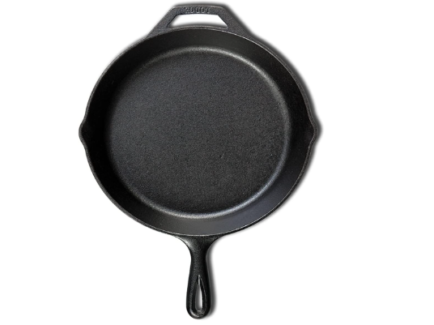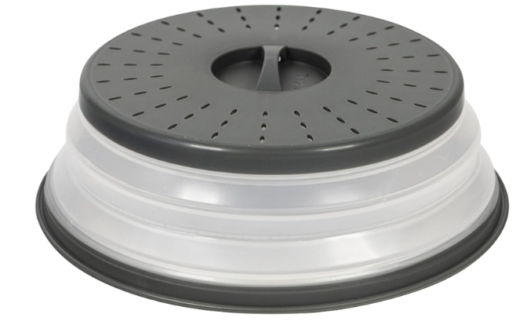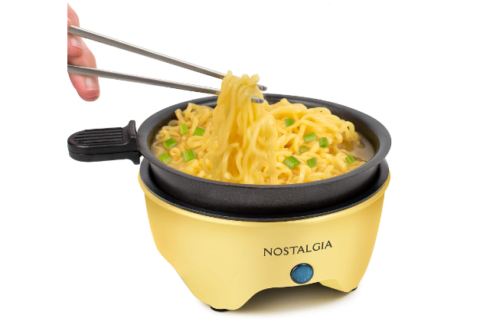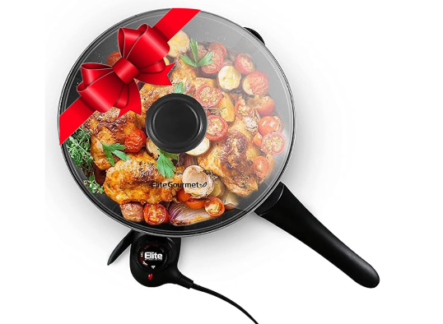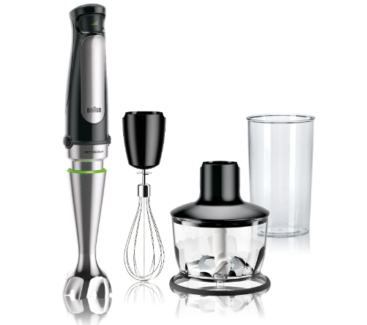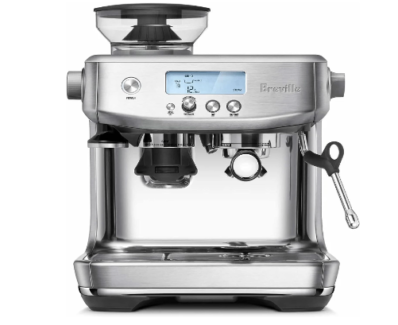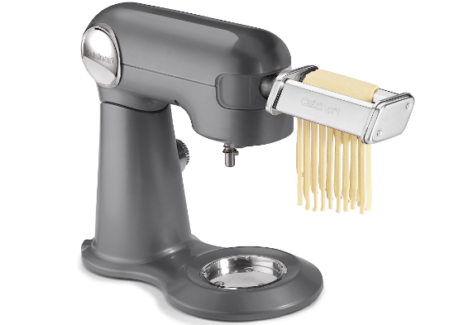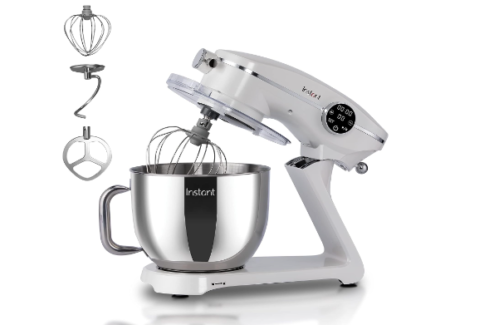My initial encounter with a vegetable steamer was fraught with...
Read More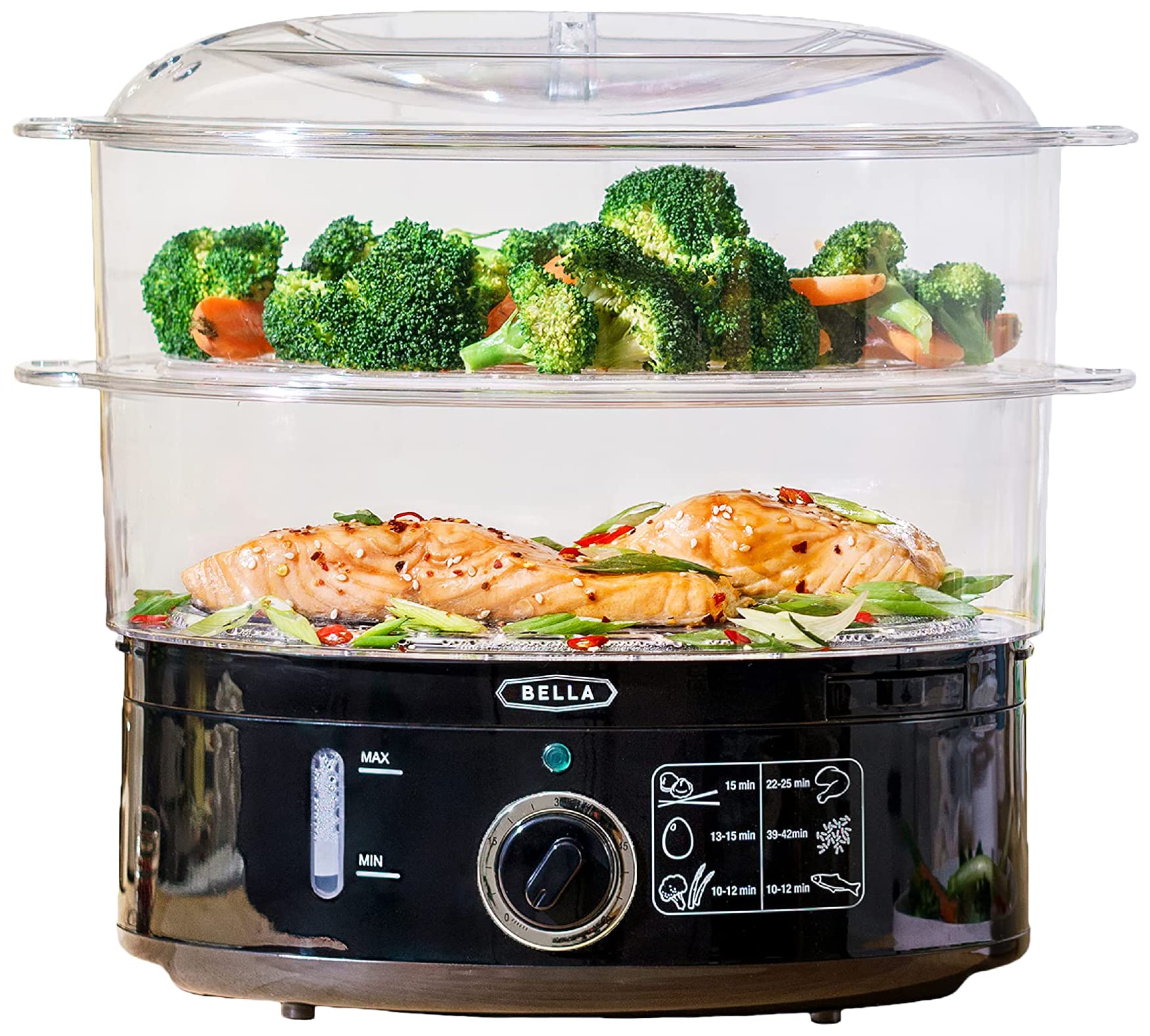
A vegetable steamer is a kitchen gadget designed to cook vegetables by steaming them. Steaming vegetables is a healthy cooking method that helps to preserve their nutrients and flavors, making it an ideal choice for those who want to maintain a healthy and balanced diet.
Vegetable steamers are available in a variety of styles and sizes, from collapsible baskets that can be used in a pot on the stove to electric steamers with multiple tiers and digital controls. Vegetable steamers can also be used to cook other types of food, such as fish, dumplings, and eggs. They are easy to use and can be a great addition to any kitchen for those who want to incorporate more healthy cooking methods into their daily routine.
Is it good to eat steamed vegetables everyday?
Yes, it is generally considered to be good to eat steamed vegetables every day as part of a healthy and balanced diet. Steaming vegetables helps to preserve their nutrients and natural flavors, while also making them easier to digest. Vegetables are an excellent source of vitamins, minerals, and fiber, all of which are essential for maintaining good health.
Eating a variety of different vegetables can also help to reduce the risk of chronic diseases, such as heart disease, cancer, and diabetes. However, it’s important to note that steaming vegetables should be part of an overall balanced diet and should not be relied on as the sole source of nutrition.
What vegetables should not be steamed?
While many vegetables are suitable for steaming, some vegetables do not steam well or may lose their texture or flavor when steamed. Here are some vegetables that are not ideal for steaming:
- Root vegetables: Root vegetables such as potatoes, sweet potatoes, carrots, and beets have a dense texture and take a long time to cook, making them unsuitable for steaming.
- Mushrooms: Mushrooms have a high water content and can become mushy when steamed. It’s better to sauté or roast them instead.
- Cabbage: Cabbage can become too soft and soggy when steamed. It’s better to shred and sauté or roast it instead.
- Tomatoes: Tomatoes have a high water content and can become too watery when steamed. They are better used in salads or sauces.
- Summer squash: Summer squash can become too watery and lose their texture when steamed. It’s better to sauté or grill them instead.
Overall, while most vegetables can be steamed, it’s important to consider the texture and cooking time of each vegetable before steaming them. Some vegetables may be better cooked using other methods such as roasting, grilling, or sautéing.
What seasoning is good on steamed vegetables?
There are many different seasonings and flavors that can be used to enhance the taste of steamed vegetables. Here are some popular options:
- Salt and pepper: A simple sprinkle of salt and pepper can bring out the natural flavors of the vegetables.
- Lemon or lime juice: A squeeze of fresh lemon or lime juice can add a bright, citrusy flavor to steamed vegetables.
- Garlic and herbs: Adding minced garlic and fresh herbs such as thyme, rosemary, or parsley can add a savory and aromatic flavor to steamed vegetables.
- Soy sauce or tamari: A drizzle of soy sauce or tamari can add a salty and umami flavor to steamed vegetables.
- Olive oil: A drizzle of high-quality olive oil can add a rich and nutty flavor to steamed vegetables.
- Balsamic vinegar: A drizzle of balsamic vinegar can add a sweet and tangy flavor to steamed vegetables.
Overall, the best seasoning for steamed vegetables will depend on personal preference and the type of dish being prepared. Experimenting with different flavors and seasonings can help you find your favorite way to enjoy steamed vegetables.
What are the different types of vegetable steamers?
There are several types of vegetable steamers available, each with their own unique features and benefits:
- Basket-style steamer: This is the most common type of vegetable steamer, and it looks like a small metal or silicone basket with legs. It sits inside a pot of boiling water and allows the steam to cook the vegetables.
- Electric steamer: An electric steamer is a standalone appliance that plugs into an outlet and uses a heating element to produce steam. They often have multiple tiers, allowing you to steam several types of vegetables at once.
- Microwave steamer: A microwave steamer is a plastic container that can be placed in the microwave with a small amount of water to produce steam. They are typically lightweight and portable, making them a great option for small kitchens or travel.
- Collapsible steamer: A collapsible steamer is a basket-style steamer that can be folded up for easy storage. They are often made of silicone, which makes them heat-resistant and easy to clean.
- Bamboo steamer: A bamboo steamer is a traditional Chinese steaming basket made from bamboo. They are often used for cooking dim sum and other Chinese dishes and are available in different sizes.
Overall, each type of vegetable steamer has its own unique advantages and disadvantages. It’s important to consider your specific cooking needs and preferences when choosing a vegetable steamer.
What is best vegetable steamer on the market?
There are many great vegetable steamers on the market, so it can be difficult to determine the “best” one. However, here are a few options that are highly rated by consumers and experts:
- OXO Good Grips Stainless Steel Steamer: This basket-style steamer is made of durable stainless steel and has extendable handles that make it easy to lift out of a pot. It also has adjustable side panels that can fit pots of different sizes.
- Instant Pot Steamer Basket: This basket-style steamer is designed to fit inside an Instant Pot or other electric pressure cooker. It is made of stainless steel and has silicone-wrapped legs that prevent it from scratching the inside of the pot.
- Hamilton Beach Digital Food Steamer: This electric steamer has two tiers and can steam multiple types of vegetables at once. It has a digital display with touch-button controls and a timer that can be set for up to 60 minutes.
- Norpro Silicone Steamer: This collapsible steamer is made of heat-resistant silicone and can be easily collapsed for storage. It is also dishwasher safe and easy to clean.
- Zojirushi Micom Rice Cooker and Warmer: While primarily designed for cooking rice, this electric appliance also has a steaming function that can be used to cook vegetables and other types of food. It has multiple settings and a programmable timer.
Again, the “best” vegetable steamer for you will depend on your specific needs and preferences. Consider factors such as size, material, and ease of use when making your decision.
Is steaming vegetables better than stir fry?
Both steaming and stir-frying are healthy cooking methods that can be used to prepare vegetables. The choice between the two depends on personal preference and the type of dish being prepared.
Steaming is a gentle cooking method that helps to preserve the nutrients and natural flavors of vegetables. It also requires minimal added fats or oils, making it a low-fat cooking method. However, steamed vegetables can sometimes be bland or unappetizing, as they may lack the caramelization and browning that occurs with other cooking methods.
Stir-frying, on the other hand, involves cooking vegetables quickly over high heat with a small amount of oil. This method can create a delicious and flavorful dish, as the high heat causes the vegetables to caramelize and brown. However, stir-frying can require more added fats or oils than steaming, which can increase the calorie and fat content of the dish.
Overall, both steaming and stir-frying are healthy cooking methods that can be used to prepare vegetables. It’s a matter of personal preference and the type of dish being prepared.
Is steaming vegetables better than microwaving?
Steaming vegetables and microwaving vegetables are both convenient cooking methods that can help retain the nutrients and flavor of the vegetables. However, there are some differences to consider:
- Retaining nutrients: Both steaming and microwaving vegetables can help to retain the nutrients in the vegetables. However, steaming is generally considered to be the better option for retaining nutrients as microwaving can cause some nutrient loss due to the high heat.
- Texture and flavor: Steaming vegetables can help to preserve their texture and natural flavor. Microwaving vegetables can sometimes lead to a loss of texture and a change in flavor, depending on the type of vegetable being cooked and the amount of time spent in the microwave.
- Speed: Microwaving vegetables is generally faster than steaming, as the microwave can cook vegetables in a matter of minutes. However, some vegetables may cook more evenly and efficiently in a steamer.
Overall, both steaming and microwaving vegetables can be good options depending on your preferences and cooking needs. Steaming may be better for retaining nutrients and preserving texture and flavor, while microwaving may be faster and more convenient.
Do you need to wash vegetables before steaming?
Yes, it is generally recommended to wash vegetables before steaming them. This helps to remove any dirt, debris, or pesticides that may be on the surface of the vegetables. Washing also helps to ensure that the vegetables are safe to eat and reduces the risk of foodborne illness.
To wash vegetables, simply rinse them under cool running water and use a vegetable brush to scrub away any dirt or debris. If you are using leafy greens, it is also a good idea to remove any tough stems or wilted leaves before steaming. Once the vegetables are clean and prepped, you can place them in the steamer basket and begin the cooking process.
What makes steamed vegetables taste better?
Steamed vegetables can taste better when they are seasoned or flavored with complementary ingredients. Here are some ideas for making steamed vegetables taste better:
- Seasonings: Use salt, pepper, garlic powder, onion powder, chili flakes, or other spices to add flavor to your steamed vegetables.
- Herbs: Fresh or dried herbs such as thyme, rosemary, parsley, or dill can be added to steamed vegetables for an extra burst of flavor.
- Butter: A pat of butter or a drizzle of olive oil can add richness and depth to steamed vegetables.
- Lemon or lime juice: A squeeze of fresh lemon or lime juice can brighten the flavor of steamed vegetables and make them taste more refreshing.
- Soy sauce or tamari: A splash of soy sauce or tamari can add savory, umami flavor to steamed vegetables.
- Cheese: Sprinkle grated cheese such as Parmesan, cheddar, or feta over steamed vegetables for a creamy and salty flavor.
- Nuts or seeds: Toasted nuts or seeds such as almonds, sesame seeds, or sunflower seeds can add a crunchy texture and nutty flavor to steamed vegetables.
Overall, the key to making steamed vegetables taste better is to experiment with different flavor combinations until you find the ones that you enjoy the most.
How do you make steamed vegetables taste better?
Steamed vegetables can taste delicious on their own, but there are many ways to make them taste even better. Here are some tips to enhance the flavor of steamed vegetables:
- Add seasoning: Seasoning can make steamed vegetables taste more flavorful. You can use salt, pepper, garlic powder, onion powder, or any other seasoning you like.
- Use herbs: Adding fresh or dried herbs to steamed vegetables can give them a delicious flavor. Try using herbs like thyme, rosemary, basil, or parsley.
- Add butter or oil: Drizzling melted butter or olive oil over steamed vegetables can make them taste richer and more flavorful.
- Add acid: A squeeze of lemon or lime juice can add a bright, tangy flavor to steamed vegetables.
- Use soy sauce: A splash of soy sauce can add a savory, umami flavor to steamed vegetables.
- Add cheese: Sprinkling grated cheese over steamed vegetables can give them a creamy, salty flavor.
- Add nuts or seeds: Toasted nuts or seeds like almonds, sesame seeds, or sunflower seeds can add a delicious crunch and nutty flavor to steamed vegetables.
Overall, the key to making steamed vegetables taste better is to experiment with different flavors and seasonings until you find the ones that you enjoy the most.
How do you steam vegetables without losing nutrients?
Steaming vegetables is one of the healthiest ways to cook them as it helps to preserve their nutrients. Here are some tips on how to steam vegetables without losing nutrients:
- Use a steamer basket: A steamer basket helps to keep the vegetables above the boiling water, preventing them from becoming waterlogged and losing nutrients.
- Steam for a short amount of time: Overcooking vegetables can cause them to lose their nutrients. Aim to steam vegetables for only a few minutes until they are tender but still crisp.
- Use a small amount of water: When steaming vegetables, use the smallest amount of water possible to create steam. This will help to preserve the nutrients in the vegetables.
- Cover the pot: Covering the pot while steaming vegetables helps to keep the steam trapped inside, preventing the loss of nutrients.
- Don’t discard the cooking water: After steaming vegetables, the cooking water may contain some of the nutrients from the vegetables. Consider using it as a base for soups or sauces.
- Don’t overdo it with seasoning: While adding seasoning can enhance the flavor of steamed vegetables, adding too much salt or butter can counteract the health benefits. Consider using herbs and spices instead of salt and butter for flavor.
Should you salt water when steaming vegetables?
It’s not necessary to salt the water when steaming vegetables, but it can add flavor to the vegetables. Some people prefer to add salt to the water when steaming vegetables, while others prefer to salt the vegetables after they are cooked.
If you do decide to salt the water, use a small amount, as the vegetables will absorb the salt as they steam. It’s important to note that salt can cause vegetables to lose some of their color, so if you want your vegetables to retain their vibrant color, it may be best to salt them after they are cooked.
Is it safe to steam vegetables in plastic bag?
It is generally not recommended to steam vegetables in a plastic bag, as some types of plastic can release harmful chemicals when exposed to heat. When heated, plastic can also melt or warp, which can be a fire hazard.
If you want to steam vegetables, it’s best to use a steamer basket or a steamer insert in a pot. Alternatively, you can use a microwave-safe container with a lid to steam vegetables in the microwave. Avoid using plastic bags or containers that are not labeled as microwave-safe, as they may release harmful chemicals into the food.
How long should you steam vegetables?
The steaming time for vegetables can vary depending on the type and size of the vegetable. As a general rule of thumb, most vegetables will be cooked in 5-10 minutes when steaming.
Here are some approximate steaming times for common vegetables:
- Asparagus: 5-7 minutes
- Broccoli florets: 5-6 minutes
- Carrots, sliced or diced: 5-7 minutes
- Cauliflower florets: 6-8 minutes
- Green beans: 5-7 minutes
- Kale: 5-7 minutes
- Potatoes, diced: 10-15 minutes
- Spinach: 3-5 minutes
- Sweet potatoes, sliced: 12-15 minutes
- Zucchini, sliced: 5-7 minutes
It’s important to keep an eye on the vegetables while steaming and check them for doneness with a fork or a knife. Overcooking can make the vegetables mushy and unappetizing, so it’s best to err on the side of undercooking them slightly.
What to do after steaming vegetables?
After steaming vegetables, there are a few things you can do to make sure they taste their best:
- Season the vegetables: Steamed vegetables can be bland on their own, so it’s a good idea to add some seasoning to enhance the flavor. Salt, pepper, garlic powder, and herbs like parsley, basil, and thyme can all be used to add flavor to steamed vegetables.
- Add a dressing or sauce: A light dressing or sauce can also add flavor to steamed vegetables. A simple vinaigrette made with olive oil and vinegar, a squeeze of lemon juice, or a drizzle of balsamic glaze can all be used to add flavor.
- Serve the vegetables immediately: Steamed vegetables are best served immediately after cooking while they are still hot and tender. If you need to wait before serving them, transfer them to a covered dish or container to keep them warm.
- Store any leftovers properly: If you have leftover steamed vegetables, let them cool to room temperature before storing them in an airtight container in the refrigerator. They can be reheated in the microwave or eaten cold as a healthy snack or side dish.
How do I steam vegetables without a steamer?
If you don’t have a steamer basket or pot, there are still several ways to steam vegetables without one:
- Use a colander: Place a colander on top of a pot of boiling water, making sure that the water does not touch the bottom of the colander. Add the vegetables to the colander and cover with a lid.
- Use a wire rack: Place a wire rack in a pot of boiling water, making sure the water does not touch the bottom of the rack. Add the vegetables to the rack and cover with a lid.
- Use a microwave-safe dish: Place the vegetables in a microwave-safe dish with a small amount of water. Cover the dish with a microwave-safe lid or plastic wrap with a few holes poked in it. Microwave on high for a few minutes until the vegetables are tender.
- Use a foil packet: Place the vegetables in a foil packet with a small amount of water and tightly seal the packet. Place the packet in a pot of boiling water and cover with a lid.
Regardless of the method you choose, it’s important to make sure that the vegetables are not touching the boiling water directly and that the lid is tightly sealed to trap the steam.
Can you put frozen vegetables in a steamer?
Yes, you can put frozen vegetables in a steamer. In fact, steaming is a great way to cook frozen vegetables because it helps to retain their nutrients and flavor. When steaming frozen vegetables, it is important to add a few extra minutes to the cooking time to ensure that they are heated through and tender. The specific cooking time will depend on the type of vegetable and the desired level of tenderness, so it is always a good idea to refer to the package instructions or do a quick online search for steaming times for the specific vegetable you are cooking.
Are frozen steamed vegetables healthy?
Frozen steamed vegetables can be a healthy option as long as they are not pre-seasoned or contain added sauces that are high in sodium or sugar. Frozen vegetables are typically frozen soon after they are harvested, which can help to preserve their nutrients. Steaming them can help to retain some of these nutrients, as it is a gentle cooking method that does not involve high temperatures or extended cooking times.
However, it is important to read the labels and choose frozen vegetables that contain no added ingredients, or only minimal amounts of salt and other seasonings. Additionally, fresh vegetables are always a great option if available, as they are typically higher in nutrients and have not undergone any processing.
How long should frozen veggies be steamed?
The steaming time for frozen vegetables can vary depending on the specific vegetable and the desired level of tenderness. As a general guideline, most frozen vegetables can be steamed for 5-10 minutes, or until they are heated through and tender. However, it is always a good idea to check the package instructions for the recommended cooking time for your specific brand and type of frozen vegetables. Additionally, it is important to avoid overcooking the vegetables, as this can cause them to become mushy and can also result in a loss of nutrients.
Should you defrost frozen vegetables before steaming?
It is not necessary to defrost frozen vegetables before steaming them, as they can be cooked from frozen. In fact, steaming frozen vegetables can help to preserve their nutrients, as it is a gentle cooking method that does not involve high temperatures or extended cooking times.
However, it may take slightly longer to steam frozen vegetables compared to fresh vegetables, so it is important to adjust the cooking time accordingly. Additionally, it is important to read the label and follow the instructions for your specific brand of frozen vegetables, as some may recommend defrosting before cooking.
Do you cover a vegetable steamer?
Yes, it is typically recommended to cover a vegetable steamer while cooking to trap in the steam and help the vegetables cook evenly. The cover also helps to prevent water from evaporating too quickly and ensures that the vegetables stay moist and tender. Some vegetable steamers come with a lid or cover, while others may require you to use a separate lid or cover that fits over the pot or pan that the steamer basket is placed in. In either case, be sure to follow the manufacturer’s instructions and use the cover as directed for best results.
Is it worth buying a vegetable steamer?
Yes, buying a vegetable steamer can be a worthwhile investment for several reasons:
- Health benefits: Steaming vegetables is one of the healthiest ways to cook them. It helps to preserve their nutrients and natural flavors without adding any extra fat or calories.
- Convenience: Steaming vegetables is a quick and easy way to prepare them. With a vegetable steamer, you can steam multiple types of vegetables at the same time, saving time and effort.
- Versatility: A vegetable steamer can be used to cook a wide variety of vegetables, from broccoli and carrots to potatoes and corn. It can also be used to steam fish, shellfish, and other types of food.
- Cost-effective: Steaming vegetables is an affordable way to cook healthy meals. You don’t need any special equipment or ingredients, and it’s a great way to use up leftover vegetables.
- Easy to clean: Vegetable steamers are typically easy to clean and maintain. Most models can be washed in the dishwasher or easily rinsed off in the sink.
Overall, a vegetable steamer can be a great addition to your kitchen if you’re looking for a healthy, convenient, and cost-effective way to prepare vegetables and other types of food.
Related Posts
Best Electric Vegetable Steamer To Help You Eat Healthier
Some kitchen appliances are essential in every kitchen. If these...
Read MoreBest Vegetable Steamer For Every Kitchen
A healthier lifestyle is within reach! These vegetable steamers expedite...
Read MoreWhy Trust Us
You will find what you are looking for at Jody's Bakery. From classic to luxury brands, you'll find both. We will help you to select appliances that fit your needs, budget and lifestyle. Whether you want to stop by to learn more — or plan to make a major purchase — we’ll treat you like family and assist you every step of the way. Shop with us today to receive friendly and experienced help along the way.









